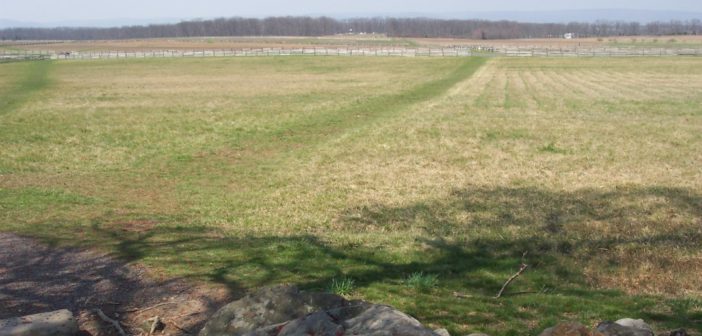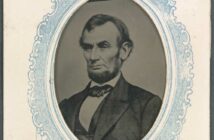Unlike the second day, the third day at Gettysburg dawned with tremendous noise and commotion as Union troops fought to regain ground lost to attacking Confederates at lower Culp’s Hill late the previous day. Confederate commander Gen. Robert E. Lee had intended to launch a supporting attack from the newly won positions to assist the main attack he anticipated launching at the Union center along Cemetery Ridge later in the day. However, the pre-dawn attack by Union troops at lower Culp’s Hill deprived the Confederate commander
of the opportunity.
Early in the morning, Lee rode southward along Seminary Ridge to the Peach Orchard, searching for his “old war horse,” Lt. Gen. James Longstreet, commander of the First Infantry Corps. After a somewhat contentious discussion, Lee ordered Longstreet to conduct a main attack against the center of the Union line on Cemetery Ridge with Gen. George Pickett’s newly arrived infantry division and two infantry divisions of Gen. A.P. Hill’s Third Infantry Corps.
Concurrently, Gen. J.E.B. Stuart’s cavalry division was to conduct a supporting, or diversionary, attack behind the Union line at what is today the East Cavalry battlefield. In addition, Lee charged Longstreet with planning and executing a preliminary artillery bombardment to support the main attack.
On the Union defensive battle line along Cemetery Ridge, the soldiers prepared to defend against another expected Confederate artillery and infantry attack. A Council of War conducted the previous evening by Union commander Gen. George Meade had correctly concluded that the most likely course of action for the Confederate Army on the third day of the battle was to resume the offensive. Hence, Union forces had the forenoon hours of July 3 to prepare for defense against the expected Confederate attack.
An hour after mid-day, the artillery bombardment against the Union lines commenced. Although accounts of the artillery bombardment vary, for upwards of two hours, the artillery of both armies fired at each other, each with some effect, damaging opposing artillery and infantry formations.
As the artillery bombardment slowed, then stopped, the advance of the Confederate infantry began. In a series of battle lines a mile wide, 12,500 soldiers marched in formation across open ground between Seminary and Cemetery Ridges.
Union Lt. Frank Haskell described the advance of the Confederate line: “Every eye could see his legions, an overwhelming resistless tide of an ocean of armed men sweeping upon us!” Within the Confederate ranks, officers and non-commissioned officers encouraged their men to continue the advance against the relentless artillery fire: “Home, boys, home is just over that hill [Cemetery Ridge],” the inference being if they could capture Cemetery Ridge, the battle and the war would be won and the men could then go home.
The Confederate infantry pressed the attack, pushing up to Emmitsburg Road in front of the Union positions on Cemetery Ridge. But now the fire of the Union infantry began to take its toll, in addition to the canister fire of the Union artillery. Onward they came, striking the Union position at its most vulnerable point, the angle in the stone wall which sheltered the Union soldiers. But to no avail.
Pickett’s charge was defeated!




